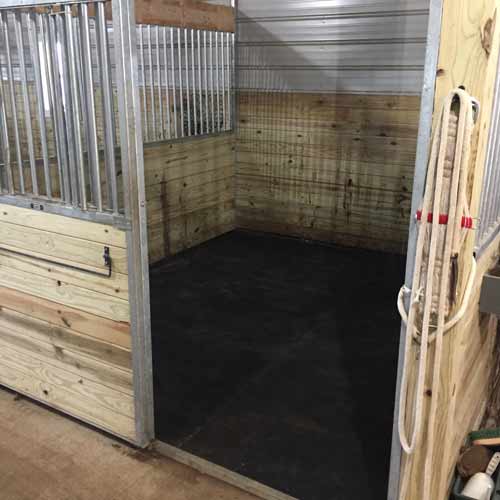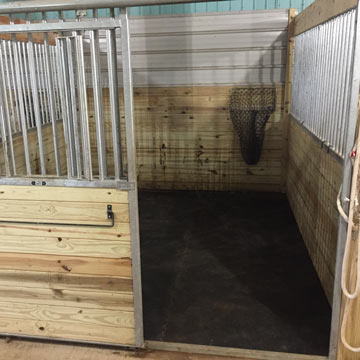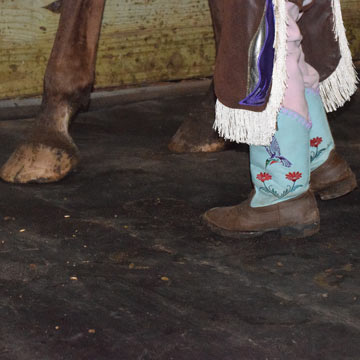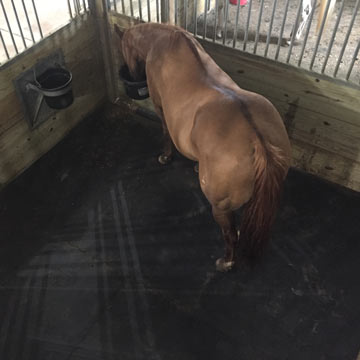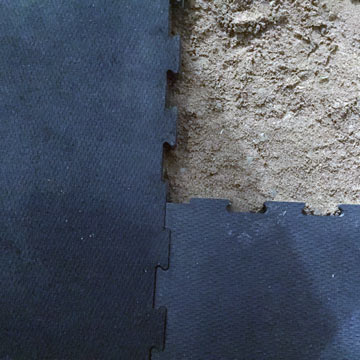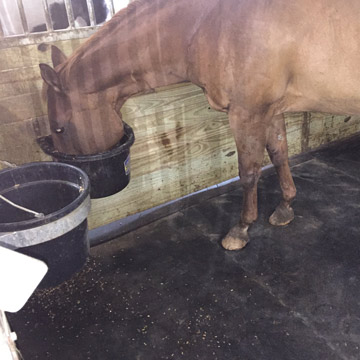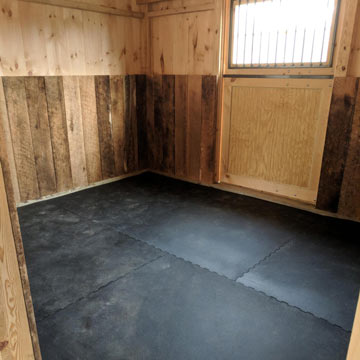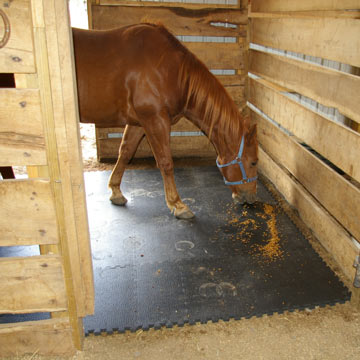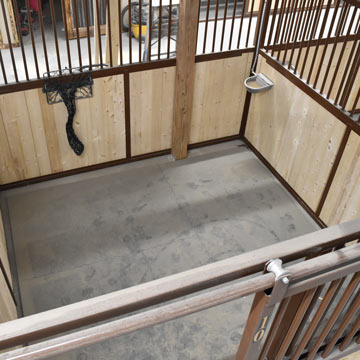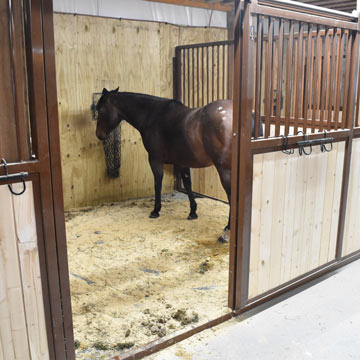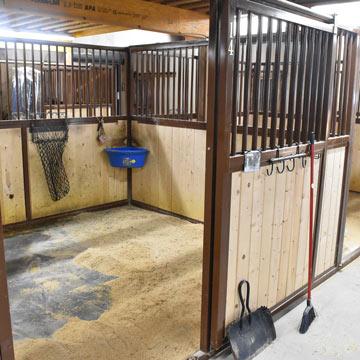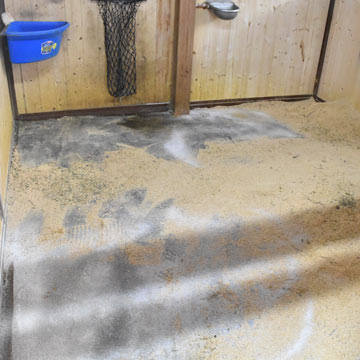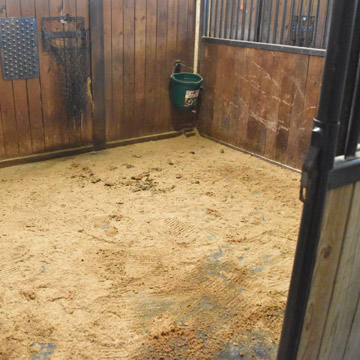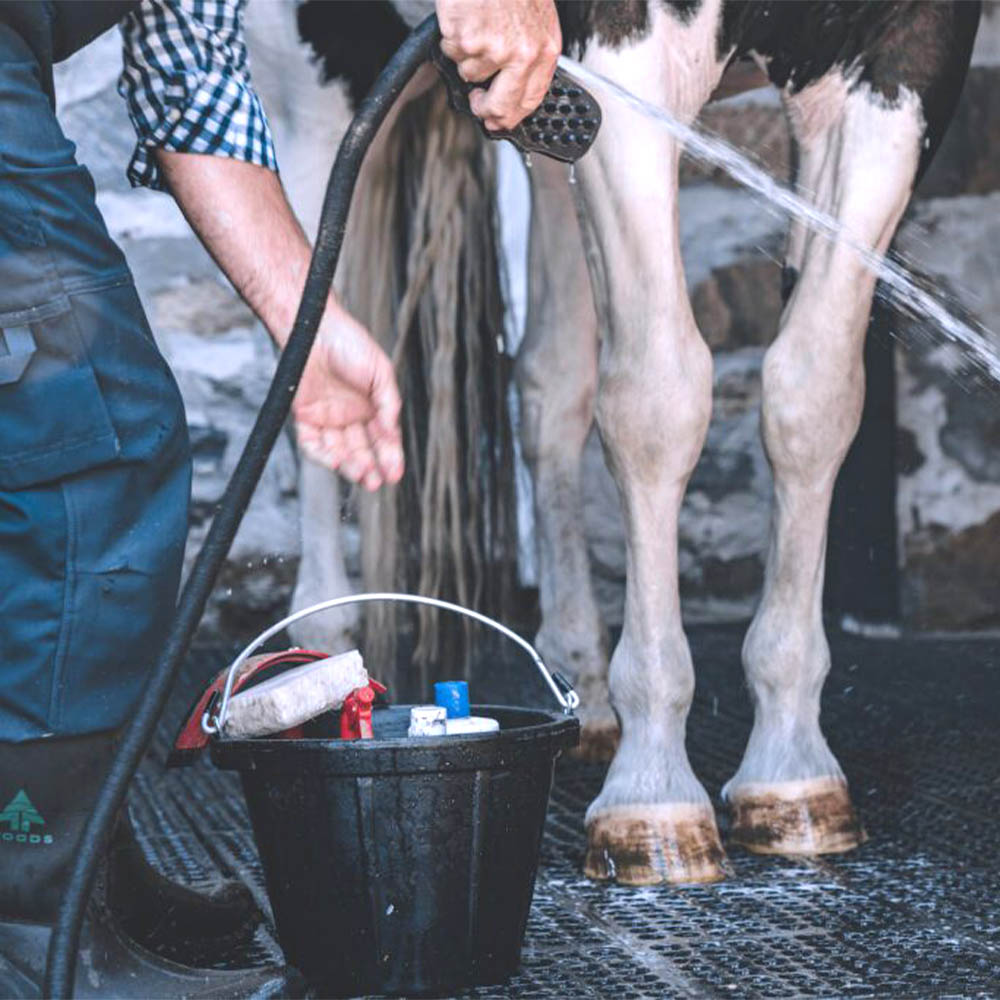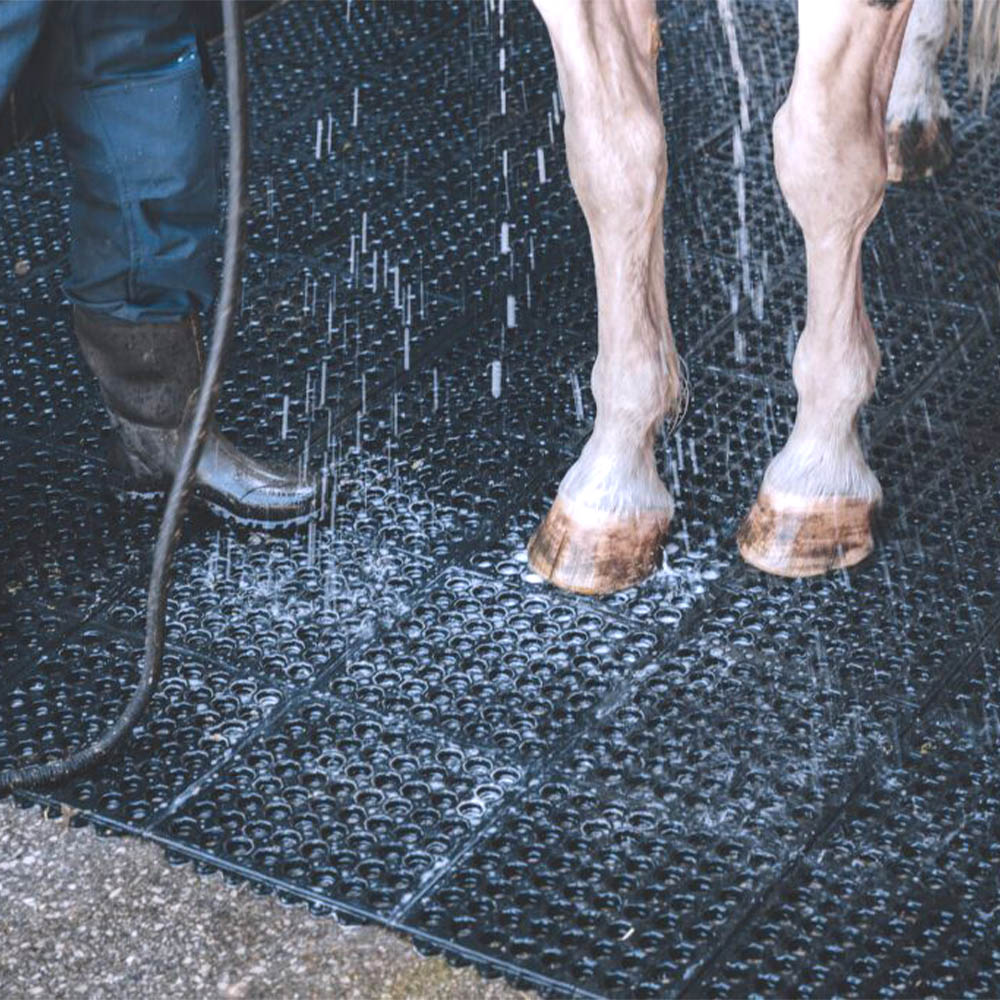How Do I Keep My Horse's Stall Dry?
Related Product: Wash Rack Classic Interlocking Mat 1/2 Inch x 3x3 Ft.
Why Moisture Matters
At first thought, you might shrug off the importance of a dry horse stall floor. After all, horses live outside in the wild, and they get by just fine, right?Well, when a horse is stalled, moisture can cause more harm than good. You may run into the following problems caused by a chronically wet stall floor:
- Soft, warping hooves
- Skin issues, like rain rot
- Thrush and other infections
- Respiratory issues, especially if urine is allowed to build up in the stall
- Poor traction, and the horse slipping or falling in the stall
Excessive moisture can cause health problems in horses, especially if your horse is confined to a stall at night. It's best to stay ahead of the moisture problem, rather than trying to correct these health issues after they've occurred.
Let's take a look at some of the most common sources of moisture in horse stalls, and what you can do to create a dry horse stall floor.
The Problem: Moisture Permeating From Your Stall Base
Does your horse's stall constantly feel damp, yet you can't determine the reason why? Moisture may actually be working its way up from your stall base. This is particularly true if you have concrete floors; your stalls may always feel somewhat damp because the moisture is being pulled into the bedding and is coming from the colder stall floor below.Another problem you may encounter is if you're working with a clay base. If it rains outside, the moisture may be pulled into the base, where it then mixes with your bedding.
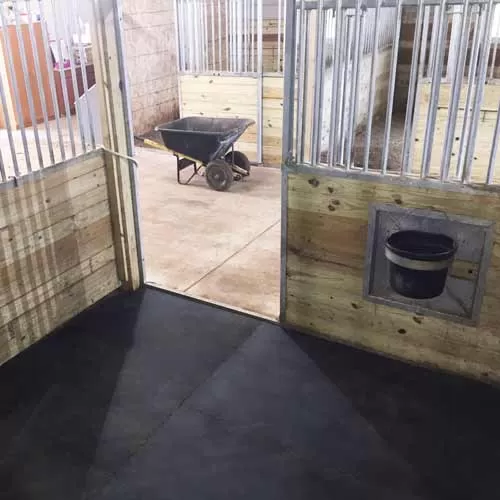
The Solution: Stall Mats and Improved Stall Design
Investing in stall mats can solve this issue. Stall mats act as a barrier between your stall base and the bedding, and they can help to keep your stall dry. Dry horse stall mats are particularly ideal when you're working with a concrete base, because they provide a forgiving barrier between the hard concrete and your horse. Additionally, stall mats help to buffer some of the cold of concrete, contributing to a stall that's both healthier and more comfortable for your horse.If you're dealing with moisture issues from your stall base, then interlocking stall mats may be the best option. While straight edge stall mats are effective, interlocking mats create a single, continuous surface. This can help to prevent bedding from working its way down between the mats and drawing moisture up into the bedding above the mats.
If you find that moisture from the outdoors is being pulled into your base, you'll need to take a look at the topography around your barn. If the land surrounding your barn slants down toward your barn, or rain is falling from the roof and pooling around the barn, you'll need to fix these issues. Investing in gutters and drainage systems can help. You may also need to raise the base of your stalls up a few inches, if possible, so that water doesn't flow into the low-lying areas.
The Problem: Precipitation Coming Through Stall Doors and Windows
During particularly windy rain and snow storms, you may find that rain or snow comes in through your stall doors and windows. This is often a problem for stalls with doors that open directly out onto the pasture, where the horses can come and go as they please.The Solution: Stall Drapes
If you want to be able to take advantage of an open stall door during inclement weather, you can invest in stall drapes designed specifically to be used on exterior doors. These flexible plastic drapes allow your horse to pass through, but serve as a buffer to keep rain and snow out of the stall. You might also put gutters on your barn to keep water from flowing off of the roof and pooling outside (and into) your stalls.The Problem: Floods
Chances are that at some point, your barn has flooded. Whether it's been water creeping into the edges of your stalls from outside, or a full-out flood involving the barn aisle, floors can happen for a number of reasons. Burst pipes, plumbing issues, heavy rainfall, and even massive snow melt can all cause floods.The Solution: It Depends
Because floods are caused by so many different issues, there's no one way to prevent flooding in your barn. If floods often happen after a heavy rain, you may want to bring in a landscaper to discuss your property's drainage and potential solutions that you can implement.Floods resulting from snow melt can often be prevented by some deliberate plowing. Never plow snow toward your barn, instead piling snow away from the barn where the runoff won't travel toward the structure. If you have drains, rivers, or other structures nearby, make sure to keep them clear of snow and ice when the snow starts to melt.
Regardless of why a flood occurred, always dry barn flooring and dry stall flooring promptly to help prevent mold and mildew from forming.
The Problem: Daily Moisture Buildup
Perhaps the most common horse stall moisture issue that barn owners encounter is a daily moisture buildup that occurs in stalls. If your bedding seems to be damp after just a day, or you're struggling to remove urine spots, the stall may simply be too damp to be healthy.The Solution: Improved Bedding and Stall Cleaning
Consider the bedding that you're using. Solving your problem may be as simple as upgrading to a bedding that is more absorbent. If you're using wood shavings, upgrading to a finer shaving or sawdust may help. You might also need to increase the amount of bedding that you're using. There are also stall bedding products, such as wooden stall pellets, that are designed for use in high-moisture environments. They may help to dry out your stall.Additionally, make sure that you're cleaning stalls frequently enough. Stalls need to be cleaned at least once a day, but if your horse is in his stall for long periods of time, more frequent stall cleaning and disinfecting may be warranted. Always make sure that you're completely removing urine spots, and follow up with a stall deodorizer.
Cleanup Tips
If you encounter a wet stall, whether it's the result of a flood or just a messy horse, you'll need to do a proper cleanup. Start by removing all of the wet bedding, then dry the horse stall mats thoroughly. If moisture has pooled beneath the mats, you'll need to remove them, dry out your subfloor, and then reinstall the dry stall mats.
Only put bedding down on a completely dry horse stall floor. You may want to put down a deodorizer before you bed the stall. Make sure that the bedding is clean and dry, and put down plenty of bedding.
Benefits of Stall Mats
Stall mats make dealing with wet stalls so much easier. Dry horse stall mats help to prevent your bedding from being mixed in with the base, which is especially important if your base is sand or clay. If you have to strip the stall, it's much easier and much faster when you're working with the smooth surface of a mat.
Stall mats also help to keep your bedding dry, acting as a barrier between the base and the bedding. Rather than absorbing moisture present in your base, the bedding is kept separate, so you'll throw out less bedding in the long run. This amounts to both monetary and time savings, especially when you have a barn with multiple stalls.
There are other benefits to dry stall mats that make the investment well worth the cost. If you're running a professional boarding facility, stall mats are expected. Investing in mats can help to bring your facility to the next level, and may help to bring in new business.
Don't forget that dry stall mats are also important to your horse's health and comfort. By helping to keep your stall dry, stall mats can prevent a number of health issues, like rain rot and thrush. The mats also provide valuable traction and cushion to your horse, which can help to reduce the chance of a slip. Mats make for a more comfortable stall for your horse, and are a great way to invest in your horse's health.
Creating the Ideal Stall
As you assess your horse stalls, you may find that you need to make some improvements in order to get a stall that maximizes your horse's health and safety. Remember, frequent stall cleaning, adequate barn ventilation, and plenty of turnout time is important for any stalled horse.
Please contact our great customer service team if you'd like to invest in stall mats for your barn. We would be happy to help you find the right mat option for your needs.

